mobile View, to the German Version tap the flag


- Republic of Ireland
- parliamentary republic
- own name: Poblacht Na h'Eireann
• Flags
• Historical Flags
• Meaning/Origin of the Flag
• Coat of Arms
• Meaning/Origin of the Coat of Arms
• Aircraft Roundel
• Map
• Numbers and Facts
• History
• Origin of the Country's Name
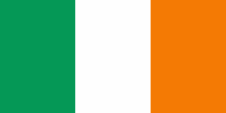
National, merchant and naval flag,
ratio = 1:2,
Source: Wikipedia (D),
Corel Draw 4





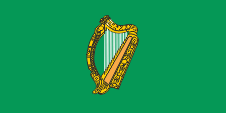
Naval jack,
ratio = 1:2,
Source: Flags of the World,
Corel Draw 4





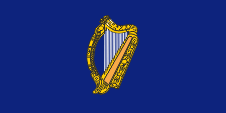
Flag of the President,
ratio = 1:2,
Source: Flaggen und Wappen,
Corel Draw 4




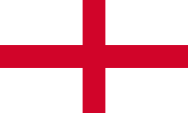
13th cent.–1606,
Flag of England → to use in Ireland,
Source, by: World Statesmen





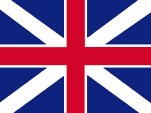
1606–1649,
Flag of England/Scotland → to use in Ireland,
Source, by: World Statesmen




1649–1660,
Flag of England → to use in Ireland,
Source, by:
World Statesmen






1660–1801,
Flag of England/Scotland → to use in Ireland,
Source, by:
World Statesmen



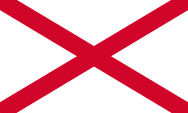
1783–1922,
St. Patrick's Flag, tolerated,
Source, by:
Flags of the World






1801–1922,
Flag of United Kingdom → to use in Ireland,
Source, by:
World Statesmen





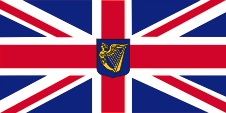
1848–1922,
Flag of the Lord Lieutenant,
Source, by:
World Statesmen



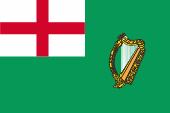
17.–18th cent.,
Unofficial merchant flag,
Source, by:
Flags of the World



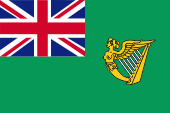
19th cent.,
Unofficial merchant flag,
Source, by:
Flags of the World



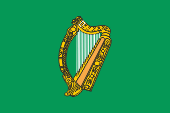
1798–1922,
Unofficial national flag,
Source, by:
Flags of the World






1848–1922,
Unofficial national flag,
Source, by:
Flags of the World






The flag of Ireland, the "Tricolour", shows three vertical stripes in green, white and orange. Green stands for the catholic majority of the population, orange stands for the Irish Protestants (to remember William 3rd of Orange), white stands for reconciliation and peace between both religious denominations. The designing of the flag has it's roots in the in the revolution's years from 1830 and 1848 frequently used French tricolor. Not only in Ireland it served as a pattern for the designing of the national flag. In this way the Irish flag was brought to Ireland by Thomas Francis Maegher in the revolution year 1848, used since 1908 for propaganda purpose, und was for the first time in use in large quantities at the national uprising in the year 1916. On 7 th of January in 1922, Ireland becomes a Free State (Dominion) and must cede Northern Ireland (Ulster) to United Kingdom. The tricolor officially becomes the flag of the country. As the Republic of Ireland was proclaimed on 29th of December in 1937, this flag was confirmed as the official state's symbol. Therewith should be symbolized the irrevocable separation from England, too. Green flags as an Irish symbol have been used at sea since the 17th century. They showed in the flying end of the flag the Brian Boru harp, a historic, Irish instrument from the 14th century and in the upper canton, the heraldry of England and later of United Kingdom. Officially these flags were not, maximally tolerated, because Ireland belonged to England or United Kingdom and had, like other parts of the country, officially to use its flags. Many attempts have been made in rebellions to overthrew the Anglo-British rule. Monochrome green flags with inscriptions or the Brian Boru harp in the middle often played a big role. From 1782 there was an Irish parliament and as a symbol of the country was introduced the Saint Patrick's Cross, which appeared from 1801 in the flag of United Kingdom. However, these flags were only partially recognized by the Irish people but can still be seen until today, albeit very rarely. The green harp flag prevailed in the uprising of 1798 as a national symbol finally. It was, in addition to the current tricolor used since 1848, an unofficial national flag until 1922. Today, the green harp flag is the naval jack of Ireland. The colors of the flag are defined as follows: orange = Pantone 151; green = Pantone 347. The president's standard shows the image of the coat of arms of Ireland, the golden harp on a blue background.
Source:
Wikipedia (D),
Die Welt der Flaggen,
Flaggen und Coat of arms of the Welt,
Flags of the World


Coat of arms of Ireland,
Source: Corel Draw 4

The coat of arms showa a golden harp with silvery strings on a blue blazon. This is the Brian Boru harp, a historic, Irish instrument from the 14th century and has been known since the Middle Ages as a symbol of Ireland. It is kept now at Trinity College in Dublin.
Source: Flaggen Wappen Hymnen

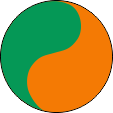
1939–1954,
Aircraft Roundel,
Source, by: Wikipedia (EN)
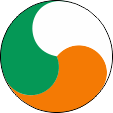
since 1954,
Aircraft Roundel,
Source, by: Wikipedia (EN)

Location:
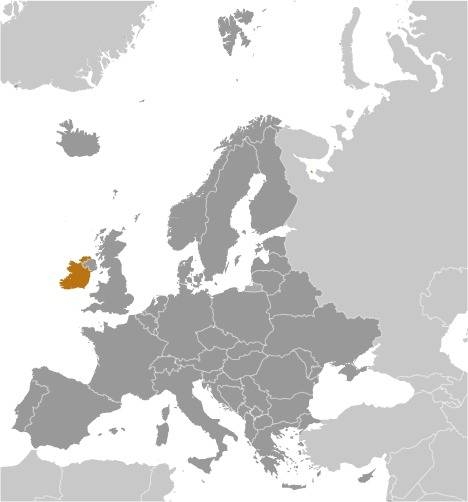
Source: CIA World Factbook
Map of the country:
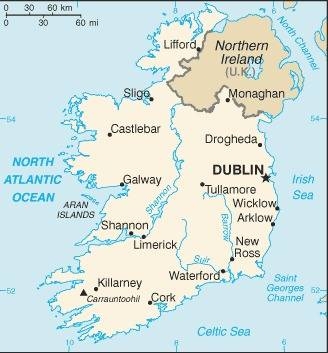
Source: CIA World Factbook

Area: 27.132 square miles
Inhabitants: 4.900.000 (2019), mostly Irish, plus 6% British, 3% Poles, 1% Lithuanians
Religions: 78% Roman Catholic, 3% Protestant, 3% Anglicans, 1% Muslim, 10% Non-Religious
Density of Population: 180 inh./sq.mi.
Capital: Dublin (Baile Atha Cliath), 553.000 inh. (2016)
official Languagen: Irish (Irish Gelic), English
Currency: 1 Euro (€) = 100 Cent
Time Zone: GMT
Source:
Wikipedia (DE)

10.000 B.C. · first settlement in Ireland
500 B.C. · immigration of Celtic tribes
since 430 A.D. · expansion of the Christianity
ca. 500 · arising of five tribal kingdoms (Ulster, Munster, Connaught, Leinster, Meath)
795–1014 · invasions of the Vikings
ca. 1000 · Brian Boru unites the tribal kingdoms
1169 · beginning of the conquest of Ireland by the Kingdom of England
1171 · Ireland becomes an English fiefdom
1297 · establishment of a first Irish Parliament, the conquest of Ireland by the Kingdom of England is essentially complete
1541 · the English king lets proclaim itself to the king of Ireland, in result powerful Irish resistance
1601 · battle near Kinsale – England triumphs over the Irish insurgents
1641 · great rebellion of the Irishmen
1649 · Cromwell's massacre in Drogheda, the Irish resistance gets broken, in result potent Irish exodus
1782 · installation of an Irish parliament
1798 · further great Irish rebellion
1801 · Ireland gets united with United Kingdom to the Unitded Kingdom of Great Britain and Ireland
1845–1855 · because of hunger exodus of Irish in masses into the USA
1916 · great armed insurrection of the Irishmen
1919–1921 · English-Irish war
7th of January in 1922 · Ireland has to cede Northern Ireland (Ulster) to England and Ireland becomes a Free Staat (Dominion)
29th of December in 1937 · proclamation of the Republic of Ireland within the British Commonwealth of Nations, therewith full sovereignty
1945 · United Kingdom recognizes the Republic of Ireland
18th of April in 1949 · Ireland leaves the Commonwealth
1973 · joining to the European Community
1998 · "Good Friday"-agreement for regulation of the Northern Ireland question
Source:
Atlas zur Geschichte,
World Statesmen,
Wikipedia (D),
Weltgeschichte

The name "Ireland" contains the old Irish rspectively Indo-Aryan word "ir", which means west. Ireland is the "Westland". West is in Irish today "Siar".
Source:
Atlas der wahren Namen


![]()















































